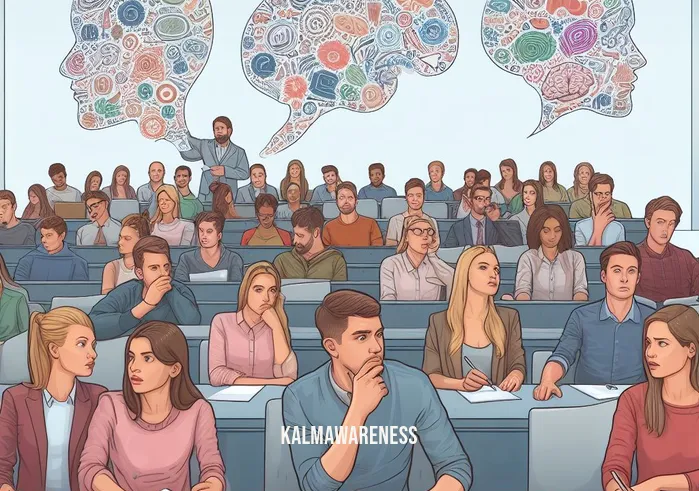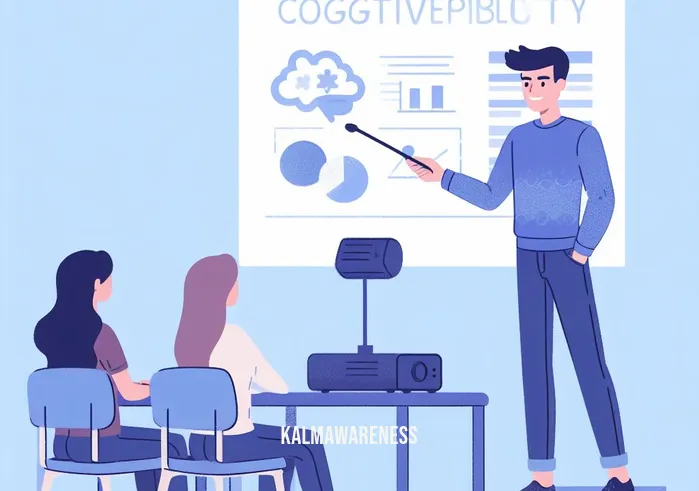Exploring the Mind: Unpacking Goldstein’s Cognitive Psychology
Cognitive psychology has always been a field that sparks curiosity and debate. Among the various scholars who have shaped our understanding of the mind, the work of Goldstein in cognitive psychology stands out for its depth and insight. This first part of our three-part essay dives into the core concepts of Goldstein’s cognitive psychology, offering a clear, engaging overview that lays the groundwork for a deeper exploration in the following sections.
Goldstein’s Unique Perspective on Cognitive Processes
Goldstein’s approach to cognitive psychology is fascinating for its emphasis on how our mental processes shape our understanding of the world. Unlike traditional models that often segment the mind into distinct compartments, Goldstein’s theory views cognitive processes as integrated and holistic. This perspective sheds light on how different cognitive functions, like memory, perception, and decision-making, are interconnected and how they influence each other in our daily lives.
One key aspect of Goldstein’s theory is its focus on the practical application of cognitive psychology. By understanding how cognitive processes work, we can better approach challenges like learning difficulties, memory impairment, and even everyday decision-making. For instance, Goldstein’s insights into how we process and store information can be pivotal in developing strategies for effective learning, as discussed in Mindfulness: Be Happy Now.
Cognitive Psychology in Everyday Life
Goldstein’s cognitive psychology isn’t just for academics or clinicians; it has real-world applications that touch on our everyday lives. For example, his theories can help us understand why we remember certain events but forget others, or how our perception can be influenced by our emotions and past experiences. This understanding can be vital in contexts like education, therapy, and personal development.
In the realm of mindfulness and mental well-being, Goldstein’s cognitive psychology intersects significantly. Techniques like mindful hypnobirthing, discussed in Mindful Hypnobirthing, draw on cognitive principles to enhance mental and emotional preparedness, showcasing the practical application of these theories.
The Interplay of Cognition and Emotion
A particularly intriguing aspect of Goldstein’s work is the exploration of the relationship between cognition and emotion. Understanding this relationship is crucial in fields like mental health, where cognitive therapies are used to treat emotional disorders. Goldstein’s theories suggest that by altering our cognitive processes, we can influence our emotional responses and overall mental health.
This interplay is evident in practices like meditation and mindfulness, which aim to stabilize the mind and emotions through cognitive awareness. Resources like How to Spell Stabilize offer insights into how cognitive psychology principles can be applied to achieve emotional balance.
Setting the Stage for Deeper Exploration
As we wrap up this first section, we’ve only scratched the surface of Goldstein’s cognitive psychology. We’ve explored his holistic approach to cognitive processes, the practical applications of his theories in everyday life, and the intriguing interplay between cognition and emotion. This foundation sets the stage for a deeper dive into specific aspects of Goldstein’s theories and their implications in various fields.
As we transition to the next part of our essay, consider this: How might an understanding of Goldstein’s cognitive psychology change the way we approach challenges in our personal and professional lives? This question not only invites reflection but also teases the rich discussions that await in the next section.

Delving Deeper into Goldstein’s Cognitive Theory
In the first part of this essay, we introduced the holistic approach of Goldstein’s cognitive psychology, touching on its practical applications and the interplay between cognition and emotion. Now, let’s delve deeper into the specifics of Goldstein’s theories, exploring how they revolutionize our understanding of cognitive processes and their implications in real-world scenarios.
The Pillars of Goldstein’s Cognitive Framework
Goldstein’s cognitive psychology is built on several key principles that differentiate it from other cognitive theories. These principles include the idea of cognitive functions as interconnected rather than compartmentalized and the emphasis on the practical application of these functions in everyday life.
| Principle | Description |
|---|---|
| Holism | Viewing cognitive processes as integrated and interconnected. |
| Practical Application | Applying cognitive theories to real-world scenarios. |
| Interconnectivity | Understanding the influence of one cognitive function on another. |
These principles form the bedrock of Goldstein’s approach, highlighting the importance of understanding the mind as an integrated system.
Cognitive Processes in the Real World
Goldstein’s theories offer insights into various real-world situations, from education and learning to therapy and personal development. For instance, his concept of memory storage and retrieval has significant implications in educational methodologies, potentially reshaping how we approach learning and knowledge retention.
A compelling aspect of Goldstein’s theory is its application in mindfulness and mental well-being. As we’ve touched upon, techniques such as mindful hypnobirthing draw on Goldstein’s principles. Another relevant application is in the realm of sustainable self-care, as discussed in Sustainable Self-Care, highlighting the importance of cognitive awareness in maintaining mental health.
Cognitive Psychology and Emotional Well-Being
Goldstein’s work significantly contributes to our understanding of the relationship between cognition and emotion. This interplay is crucial in developing therapeutic approaches for emotional disorders. Goldstein’s theories support the idea that by modifying our cognitive processes, we can influence our emotional responses, leading to better mental health outcomes.
In this context, practices like mindfulness and meditation, which aim to achieve a peaceful state of mind, can be better understood through Goldstein’s lens. The article Involves Attaining a Peaceful State of Mind in Which Thoughts Are Not Occupied by Worry offers a deeper look into how cognitive psychology principles underpin these practices.
Preparing for a More In-Depth Understanding
As we conclude this second section, we have explored the foundational principles of Goldstein’s cognitive psychology and its applications in various aspects of life. We have seen how these theories are not just academic concepts but tools that can significantly impact our daily lives, from learning and personal development to mental health and emotional well-being.
In the final section, we will synthesize these insights, looking at the broader implications of Goldstein’s cognitive psychology in contemporary society. But before we move on, let’s ponder this: How might Goldstein’s theories be applied to emerging fields such as digital learning or virtual reality? This question not only points to the adaptability of Goldstein’s cognitive psychology but also invites us to explore its potential in future innovations and technological advancements.

Harnessing Goldstein’s Cognitive Insights for Future Endeavors
As we conclude our exploration of Goldstein’s cognitive psychology, let’s integrate the insights from the previous sections and consider how they apply to contemporary and future contexts. This final part synthesizes key ideas and offers actionable perspectives, encouraging further exploration and application of these concepts.
The Broad Spectrum of Goldstein’s Cognitive Theory
Goldstein’s cognitive psychology, with its emphasis on the holistic and interconnected nature of cognitive processes, has wide-ranging implications. We’ve seen how it applies to education, mental health, and personal well-being, but its potential extends far beyond these areas.
Future Applications in Technology and Learning
One exciting prospect is applying Goldstein’s theories to digital learning platforms and virtual reality (VR). Imagine VR environments designed with cognitive principles in mind, enhancing learning experiences by catering to our holistic cognitive processing. Such applications could revolutionize education and training, making complex concepts more accessible and engaging.
Enhancing Mental Health Practices
Goldstein’s insights also have profound implications for mental health therapies. Cognitive-behavioral therapy, for instance, could be enriched by integrating Goldstein’s holistic perspective, offering more nuanced and effective treatments for a range of psychological issues.
Actionable Steps for Applying Goldstein’s Theories
- Incorporate in Educational Curricula: Integrate Goldstein’s cognitive principles into teaching methodologies for a more holistic learning experience.
- Design of Therapeutic Programs: Utilize these theories in developing mental health interventions that consider the interconnectedness of cognitive processes.
- Application in Digital Innovations: Leverage Goldstein’s insights in designing user interfaces and experiences, especially in immersive technologies like VR.
Looking to the Future
The potential future applications of Goldstein’s cognitive psychology are vast and varied. We might see its principles shaping the development of AI, enhancing user experiences in technology, or even guiding public policies on mental health and education.
Call-to-Action: Further Exploration
For those interested in delving deeper into Goldstein’s cognitive psychology, I encourage exploring resources like Jack Kornfield Meditation for Beginners and Mindful Movement Sleep. These resources provide practical insights into applying cognitive principles in daily life.
Summarizing Our Journey
In this essay, we’ve traversed the landscape of Goldstein’s cognitive psychology, uncovering its core principles and real-world applications. Here’s a brief recap of our journey:
- Holistic Approach to Cognition: Understanding cognitive processes as interconnected and dynamic.
- Practical Applications: From educational strategies to mental health therapies, Goldstein’s theories have widespread implications.
- Future Prospects: Potential applications in digital learning, VR, and beyond, promising exciting developments in various fields.
As we wrap up, let’s ponder how integrating Goldstein’s cognitive psychology into various aspects of our lives and society might lead to more effective, holistic approaches to learning, problem-solving, and mental well-being. This exploration doesn’t end here; it’s just the beginning of a journey into understanding the intricate workings of the human mind.





